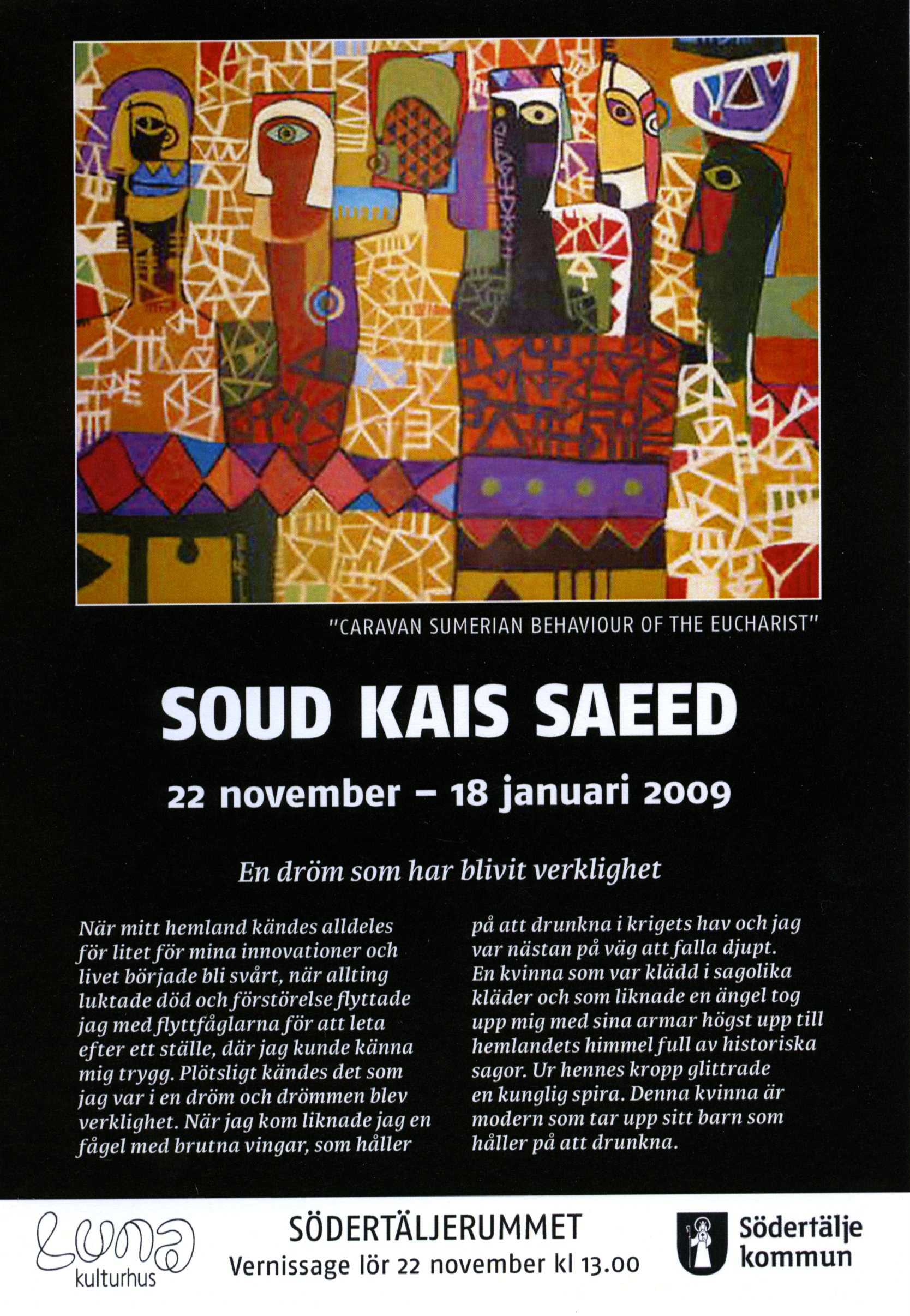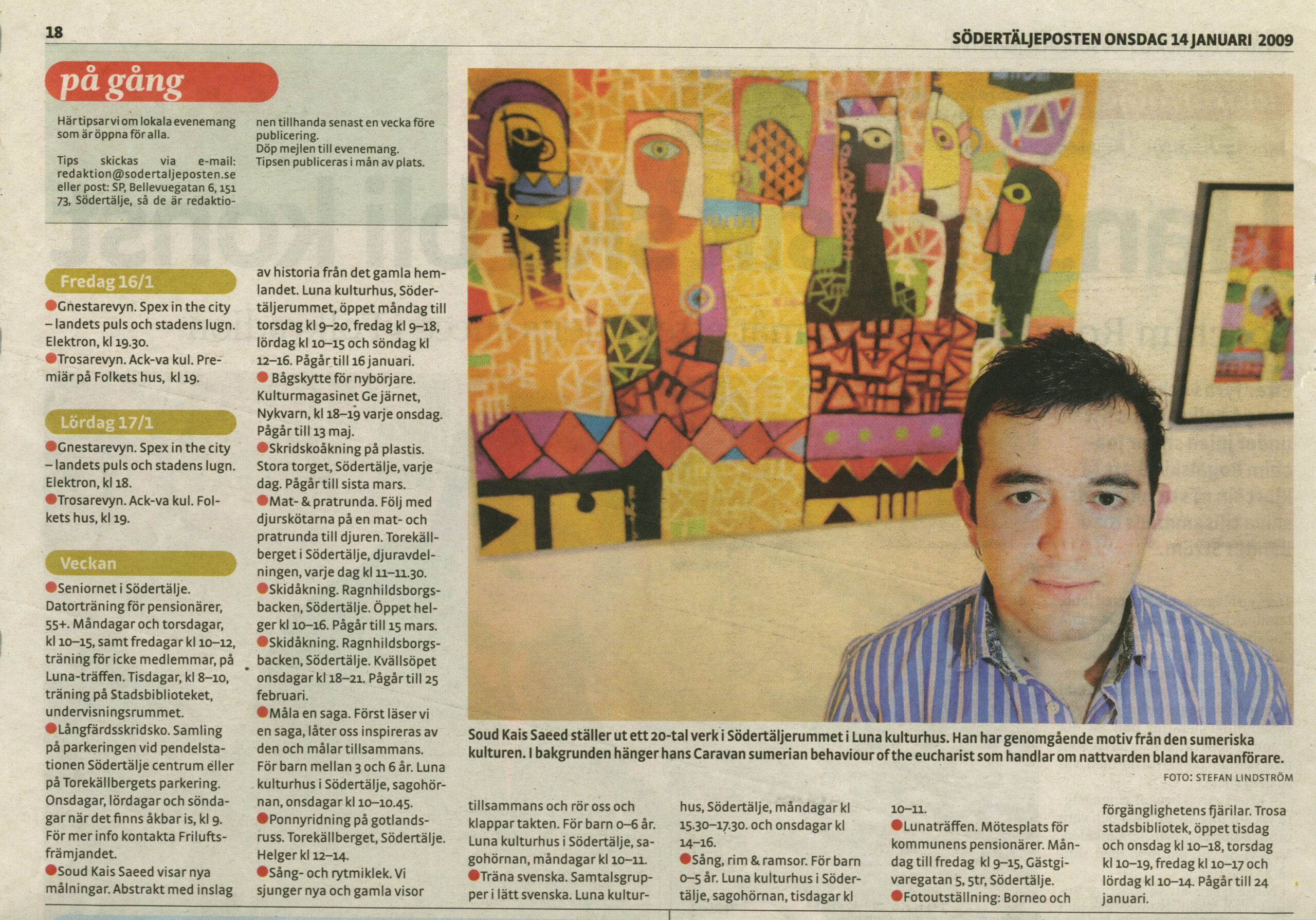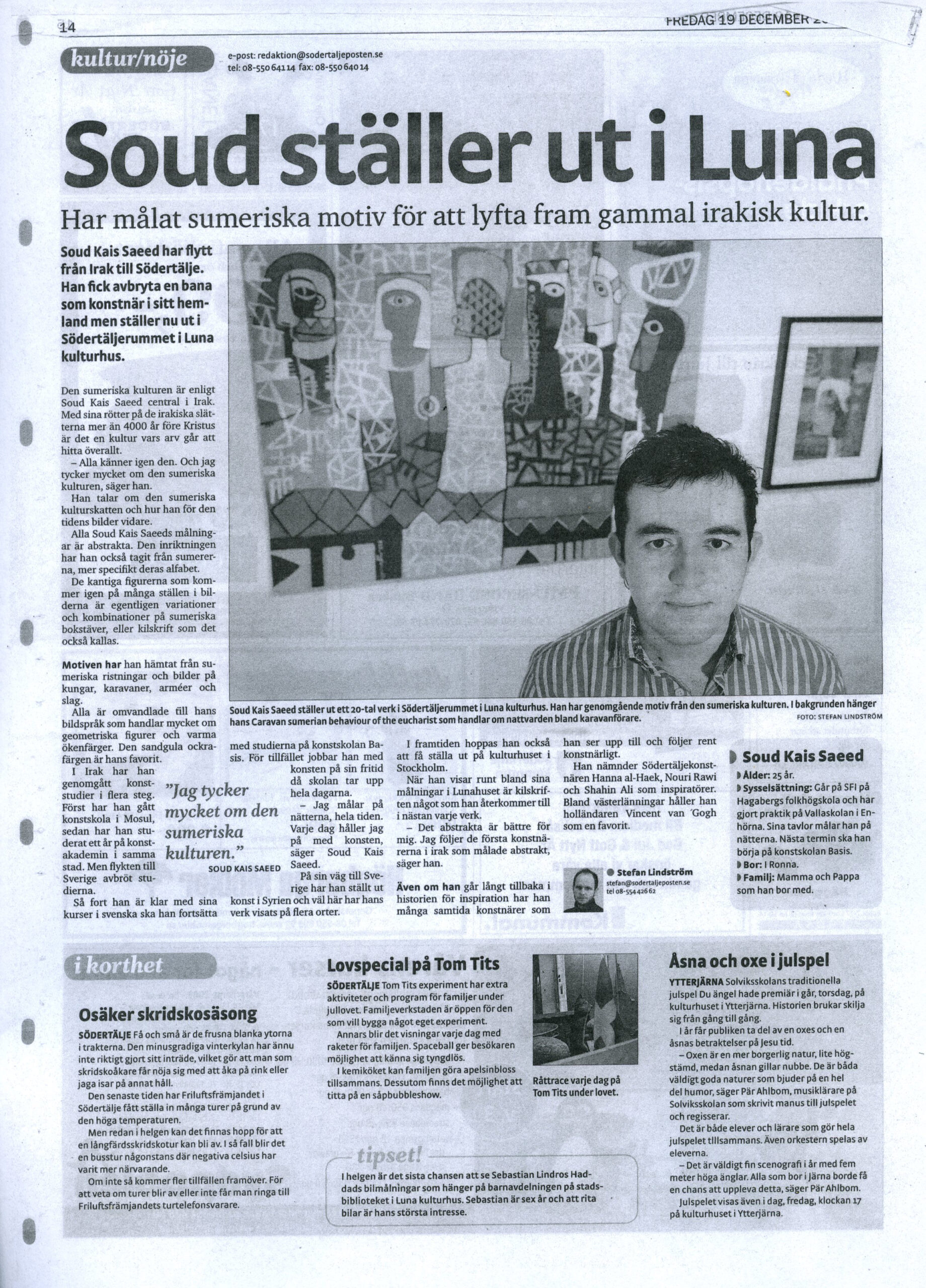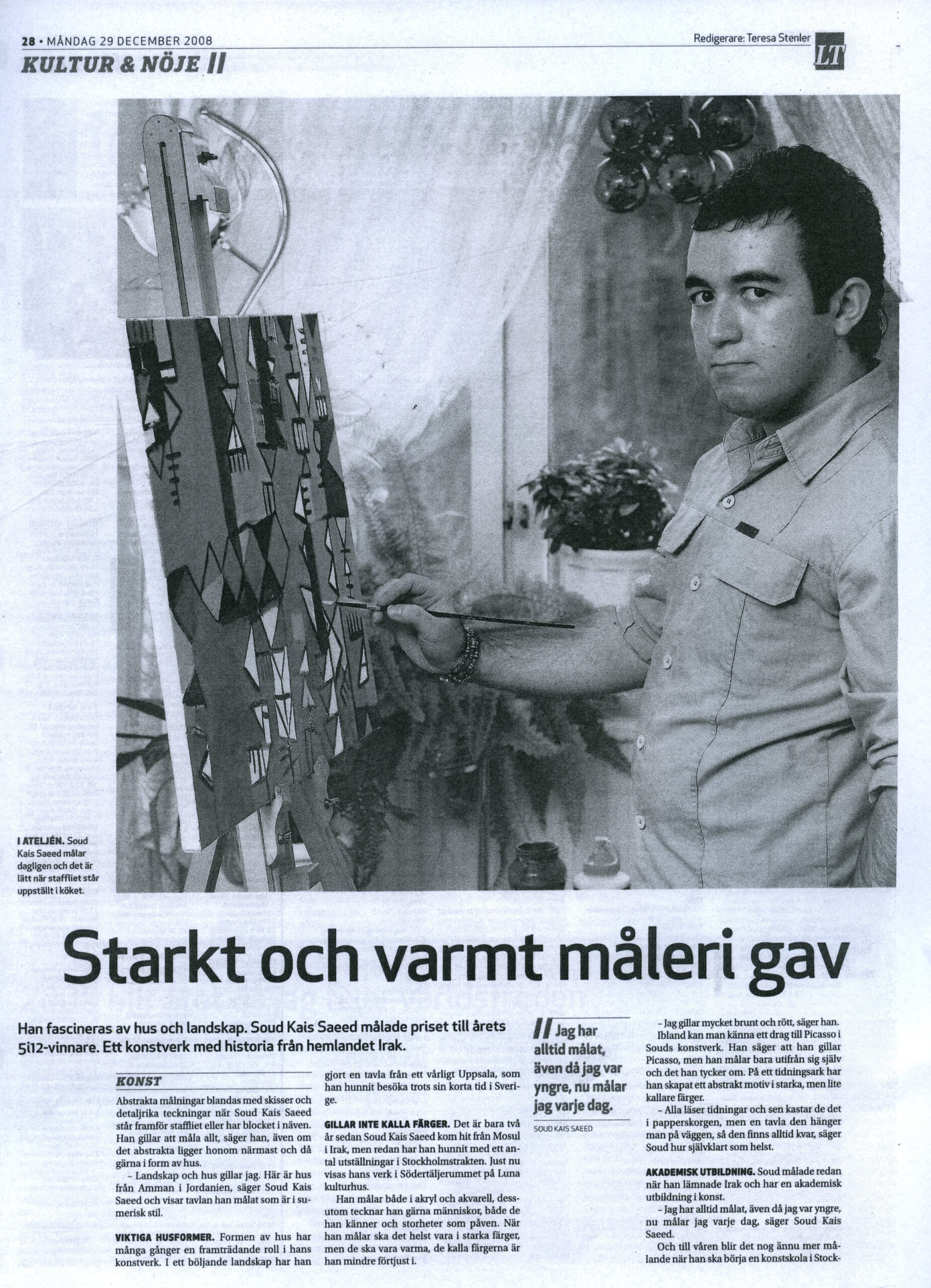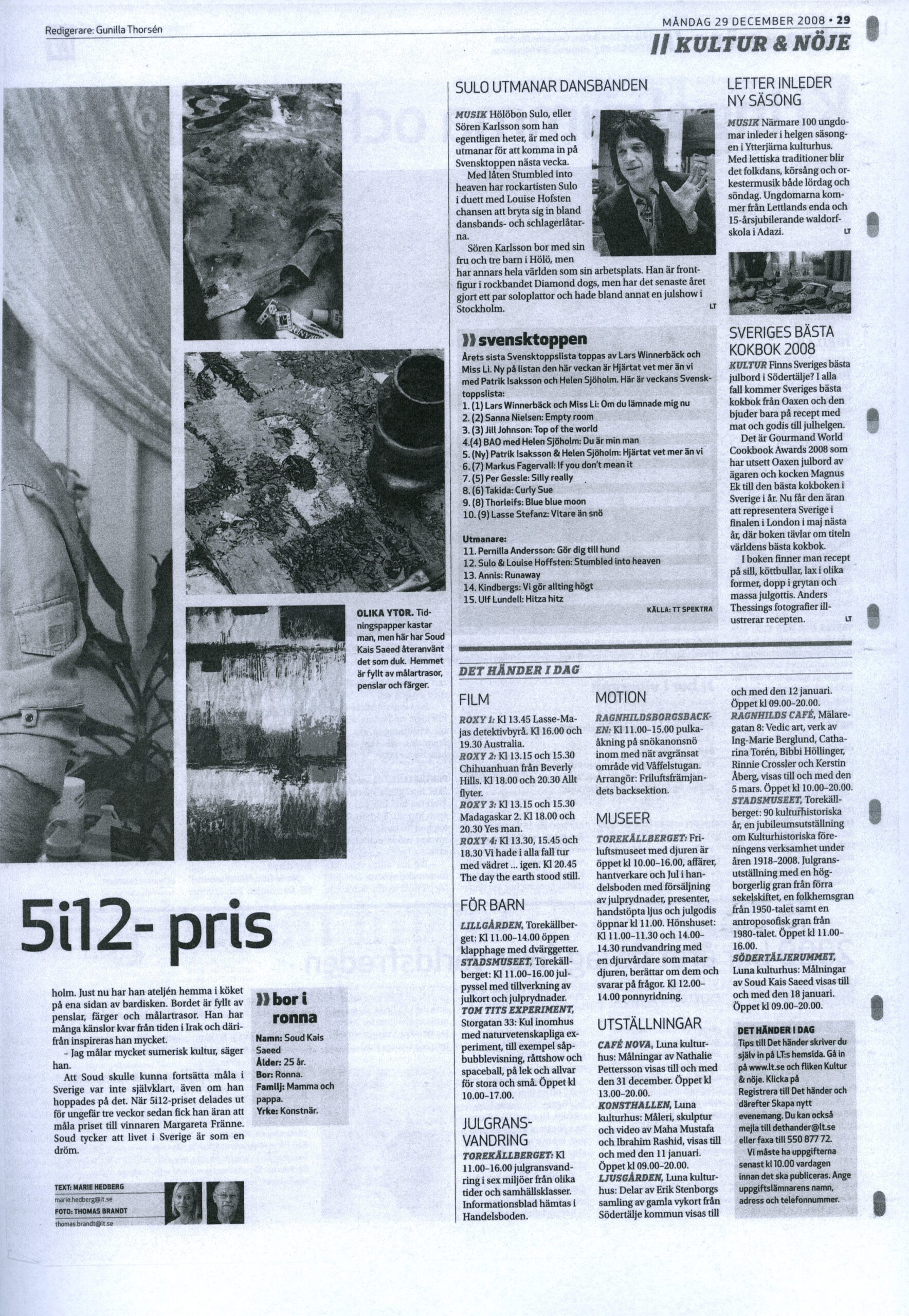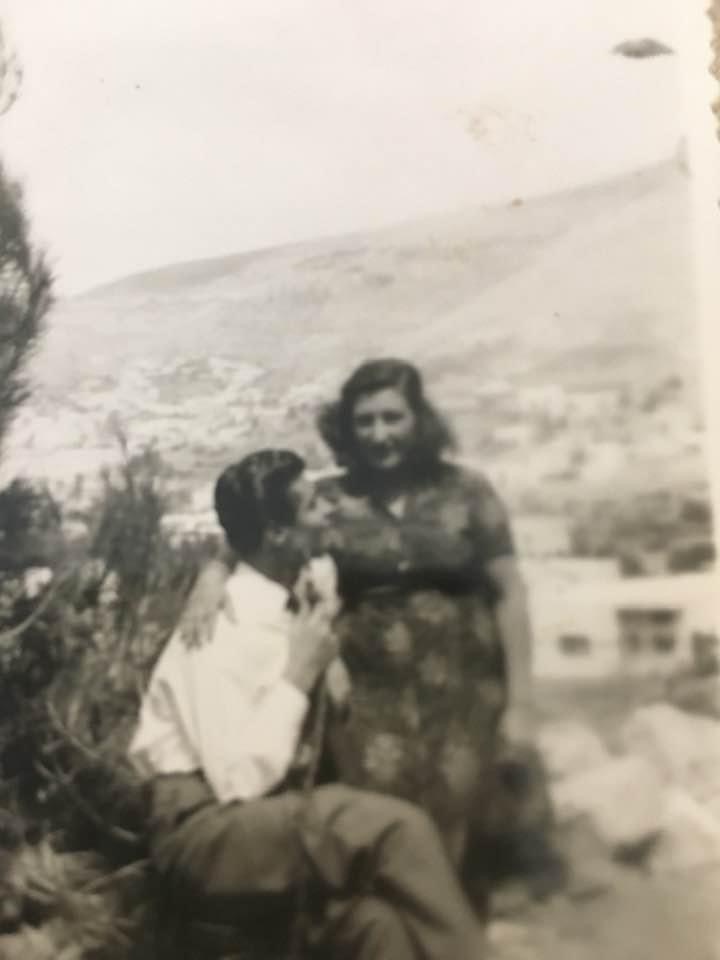
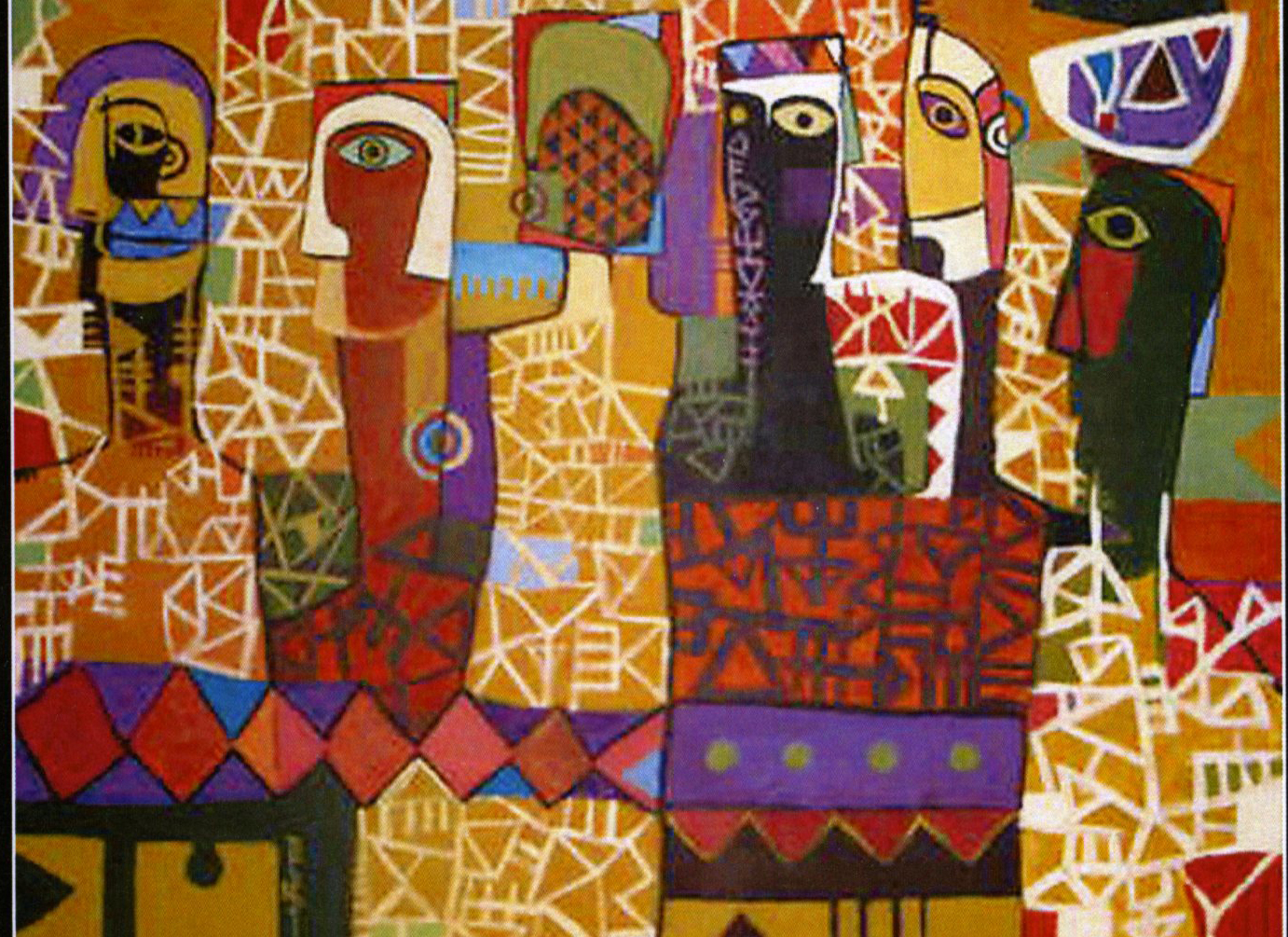

At the time of the exhibition in Södertäljerummet (The Södertälje room), which was part of the art gallery and then Luna culture house, Soud Kais Saeed was 25 years old. He was new to Sweden for two years and studied at SFI (Swedish for immigrants) at Hagaberg School. He painted at at night, at home in his kitchen in the apartment in Ronna, Södertälje. Soud had been forced to interrupt his studies at the Academy of Fine Arts in Mosul, Iraq in connection with his escape to Sweden with his parents. The ambition was to continue the art studies in Sweden. On his way to Sweden, he showed art in several places in Syria. A couple of exhibitions in the Stockholm area had been included. Soud was the artist who painted the prize for the 5i12 winner in 2008. He was one of the participating artists at Sörmlandssalongen in Södertälje konsthall in the autumn of 2009.
The paintings shown in the Södertälje room was based on the Sumerian cultural tradition. In an interview with LT (December 19, 2008), he talks about the importance of the ancient Sumerian cuneiform writing in his abstract painting. Stefan Lindström writes “The angular figures that reappear in many places in the pictures are actually variations and combinations of Sumerian letters, or cuneiform as it is also called”. Wedge writing, the world’s first known written language, was a pictogram that originated about 5000 years ago and was drawn on clay tablets.
What Soud showed in the Södertälje room were watercolor and acrylic paintings. The favorite color scheme was warm, preferably red and brown. Strong colors. “The motifs he has taken from Sumerian carvings and pictures of kings, caravans, armies and battles.” Houses and landscapes, another favorite motif circle, he tells Länstidningen.
Sources: Konsthallen´s archive folder, text and compilation Anneli Karlsson
